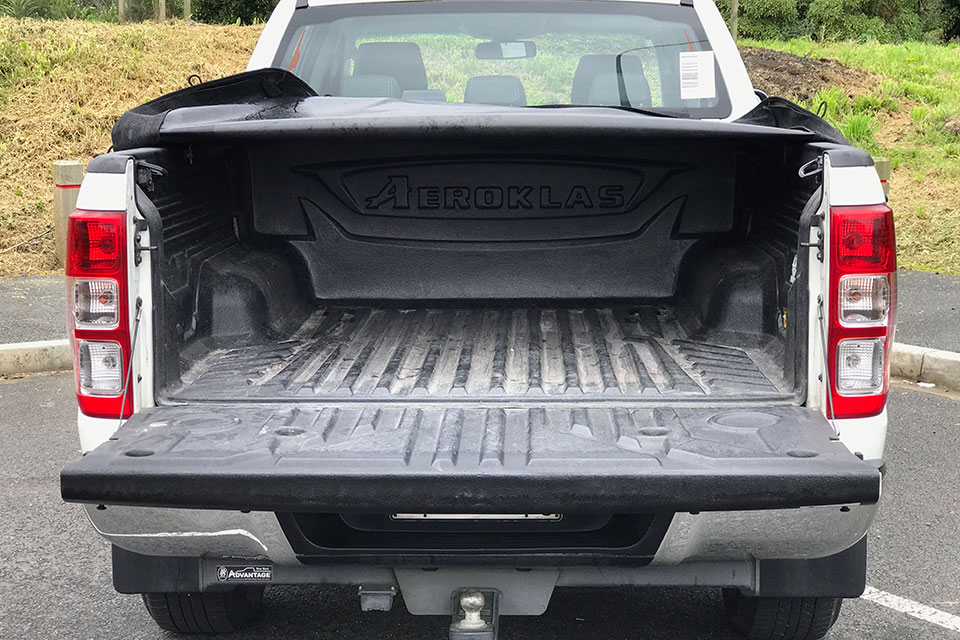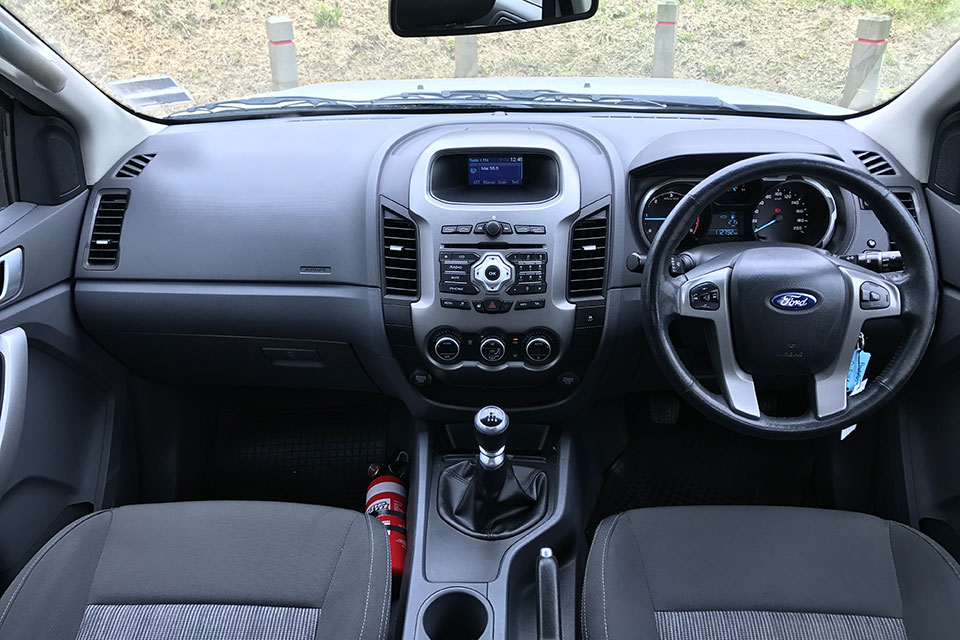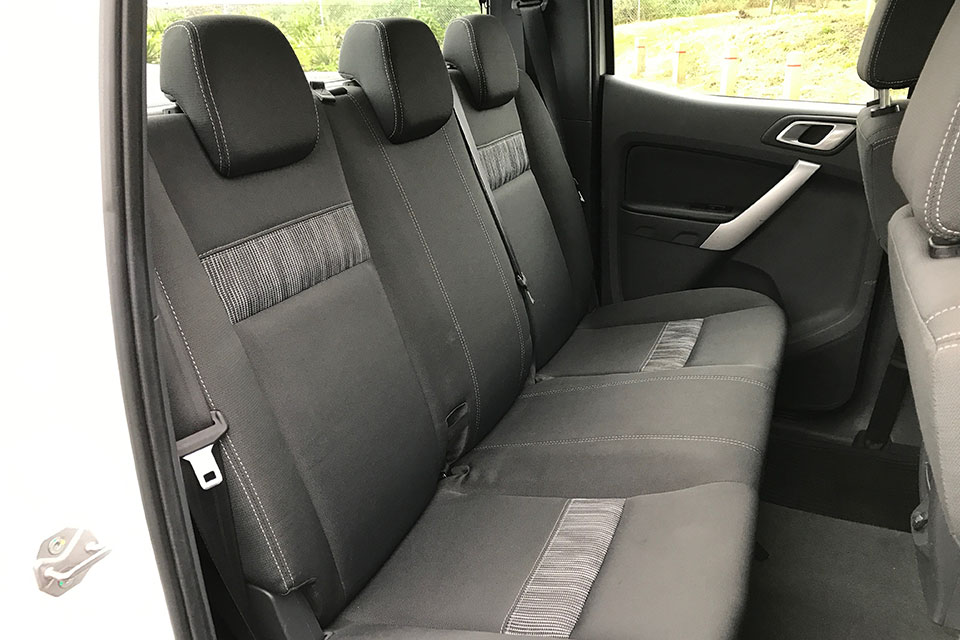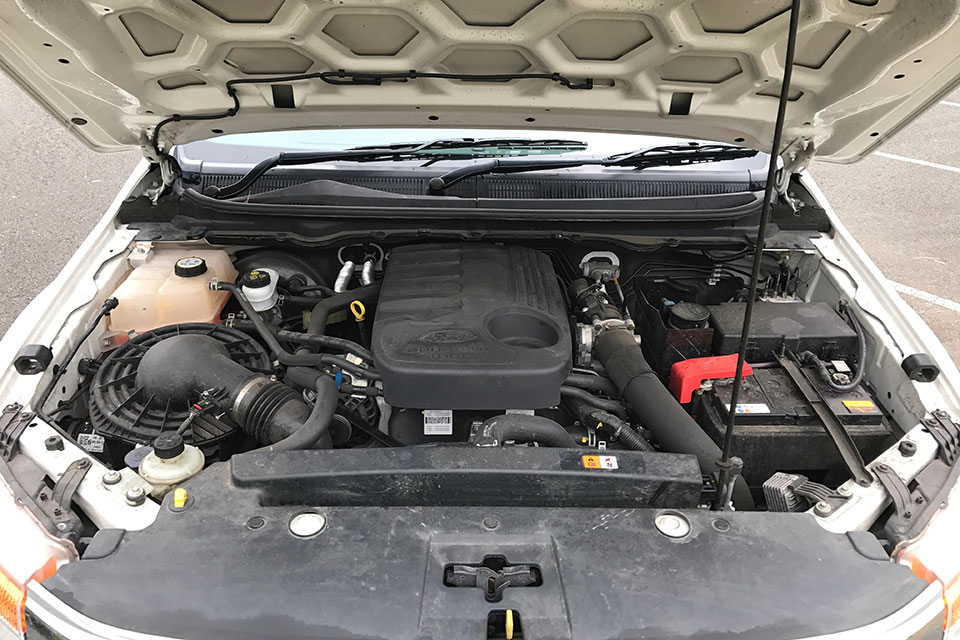Ford Ranger 2011-2015 used car review
The Ford Ranger is big and sturdy. It has an enormous amount of interior and load space.

The Ford Ranger is big and sturdy. It has an enormous amount of interior and load space. The Ranger has a strong tow rating and can pull heavy loads, though you need to be cautious.
The new generation Ford Ranger made a significant impact on the car market when it was launched in 2011. Bigger than most competitors, its styling made it look like the larger American F150. The Ranger offers car-like comfort and features that make it ready for hard work.
Sales grew until the Ranger overtook the Toyota Hilux as the country's most popular ute and the Toyota Corolla as our most popular vehicle. It is available in single and extra cab versions, although the double cab is by far the most popular.
This review focuses on the 2011-2015 version, a vehicle made before a major facelift and updates late in 2015.
Inside and out
The Ford Ranger is big – at 5,359mm in length, it is more than 150mm longer than the Toyota Hilux. The styling is square and tough, with a high bonnet and large chrome grille at the front. The front bumper has lower plastic cladding that resembles the ‘style bars’ added as an optional extra to many utes. Our two-wheel drive XLT model is a ‘High-Rider’ version, with a ride height the same as the four-wheel drive Ranger. Initially an option, this became so popular that standard height versions were phased out.
The rear tray is capable of carrying up to 1.21 cubic metres of cargo under the optional vinyl cover. The truck is rated to carry up to 1,002kg, the third highest rating in the market at the time. If you need to fit large items, you can squeeze loads up to 1,120mm between the wheel arches.
Loading can be an effort because of the Hi-Rider’s extra height – when it’s down, the edge of the tailgate is still 870mm off the ground. Six tie-down points secure your load. Our review vehicle is fitted with an aftermarket tray liner and we recommend installing one for protection. They cost from $400.
The ute’s interior is very car-like and comfortable. The steering wheel is leather-wrapped and features controls for the Bluetooth phone system and stereo. The gauges are clear and easy to read; they look like they have come from one of Ford’s passenger products.
The centre console houses a 3.5-inch colour screen for Ford’s SYNC system. It displays vehicle information, includes the CD player stereo and parking sensor display and can connect to your phone through USB. The system allows you to make calls, play music and send messages by voice instruction – just press the speech button on the steering wheel and ask. It works okay once you understand the commands. What we do not like about this version of SYNC are the dash control buttons – they are small, fiddly and don’t correspond well with what’s happening on the screen.
The XLT gets separate climate control temperature settings for driver and passenger. The Ranger’s firm and supportive seats are excellent. The driver’s seat has a very good range of adjustment, including for height. With 100,000km of use, the driver’s seat in our vehicle is showing some fabric wear on the base, something you should look out for.
Rear seat space is class-leading. At 182cm this reviewer was able to sit behind a front seat set in position for him. Two adults will be the most comfortable, although a child or smaller adult can fit in at a squeeze. Each rear passenger gets a headrest, a nice feature considering how close the rear window is.
On the road
Engine options include a 2.5-litre four-cylinder petrol – available only on XL models to special order – and a 2.2-litre four-cylinder turbocharged diesel engine. The vast majority of Rangers sold in New Zealand are powered by a 3.2-litre five-cylinder turbocharged diesel engine called Duratorq. The engine produces 147kW and 470Nm of torque, more than enough to make the Ranger feel reasonably quick even though it weighs nearly 2,000kg empty. Acceleration is brisk – while the engine makes itself heard when accelerating, once underway it is relatively quiet.
Transmission choices are a six-speed automatic or the smooth and light-shifting six-speed manual in our review vehicle. It has been said a lot in this review but again the Ranger is very ‘car-like’ in the way it drives. The steering is highly regarded – it’s light around town for easy maneuvering yet well-weighted and responsive on the open road.
The ride is comfortable and there is surprisingly little body roll. When lightly loaded, the Ranger can bounce around a little on bumpy roads, as all utes do, and is one of the best performing in this area. The brakes also perform well.
It is a massive vehicle and parking can be challenging in standard-size spaces. Large side mirrors do a great job of letting you see to the rear of the car. Reversing sensors are standard on the XLT, very helpful when parking. The Wildtrak gets a reversing camera as standard.
All Rangers can pull sizeable loads. Trailers without brakes up to 750kg (a medium-size garden trailer) and 3,500kg braked (a large trailer boat) can be pulled. There have been some issues with towing - read about these in our reliability section.
Safety
The Ranger is part of a new generation of utes that go toe-to-toe with passenger cars for safety levels. RightCar lists it with a five-star ANCAP rating (2011-). Safety equipment levels are very high and include front, side and curtain airbags, intelligent seat belt reminders, anti-lock braking, electronic brakeforce distribution, and electronic stability control.
There are no ISOFIX child seat mounts in the rear of the car because of Australian Design Rules. There are child seat anchor points behind the seat. We found many online reports that three child seats can fit successfully.
Reliability
The Ranger’s diesel engine appears to be durable enough in the relatively short time it has been on the New Zealand market. That’s impressive, considering how hard utes have to work. It uses a timing chain which does not require regular replacement.
Rangers can produce visible smoke from the exhaust when warmed to proper operating temperature and accelerating hard. If this happens when you are testing the vehicle, it is not necessarily a reason to panic. It is usually the diesel particulate filter using the high temperature to automatically clean itself.
This engine has a peculiarity that means it is best serviced by your Ford dealer rather than at home. If it is drained of oil for longer than ten minutes, the self-priming oil pump can also drain and when re-started is quite likely to be unable to operate efficiently – with potentially catastrophic results. Ford New Zealand is quite specific in its service bulletins about this procedure.
When shopping for a Ranger, ensure the transmission is shifting smoothly and operating in all gears. Be wary of vehicles you think have been used for this type of work. To improve the longevity of your Ranger, don’t allow it to pull heavy weights in too high a gear – simply change down if it sounds like it is labouring. The powerful engine can handle those loads but the huge amount of torque on offer can stress the transmission.
The Ranger uses a modern networked electronics system, which can conflict with trailer lighting equipment, especially where LED lighting is involved. A poorly wired trailer can cause damage to the vehicle's electronics so ensure you fit only equipment supplied by Ford or a professional supplier. If your trailer lights flicker or dim, the issue can often be fixed with a $50 ‘bridging’ cable, available from Ford and other towbar suppliers.
While the Wildtrak model comes fitted with a unique sliding lid for the tray, these are known to leak and are not entirely waterproof. Be cautious about what you store in the tray if wet weather is expected.
Cost of ownership
Ford recommends servicing the Ranger every 12 months or 15,000km, whichever comes first. Service costs vary with the mileage covered. The 15,000km service will cost $250, the 30,000km service $520 and the 45,000km service $620. That cycle then repeats up to 240,000km when a $750 service is required.
The Ranger, with its large 3.2-litre engine, is one of the thirstier diesel-powered utes. Its fuel consumption is still reasonable – RightCar estimates that over 14,000km of driving a year, it will cost $2,570 in fuel and Road User Charges. That’s the same as the less powerful Nissan Navara. The 80-litre fuel tank will cost $116 to fill at $1.45 a litre and could take you up to 890km before the fuel light comes on.
A vehicle licence for the Ranger costs $183.31 a year, with the car in the cheapest ACC levy group for diesel.
Trade Me Insurance estimates insurance for a Ranger valued at $25,670 will cost $62.35* per month. The Ranger is considered a high-risk vehicle so you might need to fit an alarm or immobiliser. Under-25s won't be allowed to drive it and an additional excess could apply.
Buyers' guide
The Ranger is in hot demand and prices are holding up well for used examples. On Trade Me the cheapest Rangers of this generation list for $25,000. Prices reach as high as $50,000 for sought-after Wildtrak models.
Watch out for Rangers that seem particularly cheap – check they are not a used import. A few Rangers are coming in from Australia as ‘statutory write-off’ vehicles – cars that were damaged in Australia and were unable to be legally returned to the road there and were then shipped to New Zealand for repair and sale. Repaired correctly, these cars may be safe but they will carry a note of this history on their documentation for life. This will make them harder to sell and permanently reduce their value.
Variants
- XL – Features steel wheels, CD Player stereo, ‘SYNC’ information and Bluetooth system, USB port for charging and streaming music, manual air-conditioning, cruise control, electric mirrors, electric windows, vinyl flooring, keyless entry, six airbags, anti-lock braking and electronic stability control.
- XLT – Adds alloy wheels, side steps, reversing sensors, automatic headlights, fog lamps, separate climate control settings for the driver and passenger and a leather-wrapped steering wheel.
- Wildtrak – Adds alternative alloy wheels, front body classing, rear window spoiler, sliding cover for the tray, roof rails, synthetic leather interior, electric driver’s seat, heated front seats, tray liner, Wildtrak graphics and Wildtrak mats.
Timeline
- 2011 Launched in New Zealand
- 2013 Small specification adjustments across the range
- 2015 Replaced by new model
Details
2013 Ford Ranger XLT Hi-Rider
$25,000 to $50,000 for models which have travelled 70,000 to 120,000km
3.2-litre five-cylinder turbocharged, 147kW/470Nm (claimed)
Six-speed manual, rear-wheel drive
Five-star ANCAP
15,000km or twelve months
Full size wheel
8.4-litres per 100km (claimed)
Diesel
5359mm
1849mm
1815mm
750kg (unbraked), 3500kg (braked)
11.8m
This review covers the Ford Ranger for model years 2011, 2012, 2013, 2014 and 2015.
Review vehicle supplied by Turners Cars.
*Our insurance estimates are based on a 35-year-old male with no accidents in the last two years, garaging the car in Mission Bay, Auckland. The car is not used for business and will cover 10,000km to 20,000km a year. We estimate with no option add-ons and $500 excess. Customise your estimate at Trade Me Insurance.
Image gallery
Also consider







